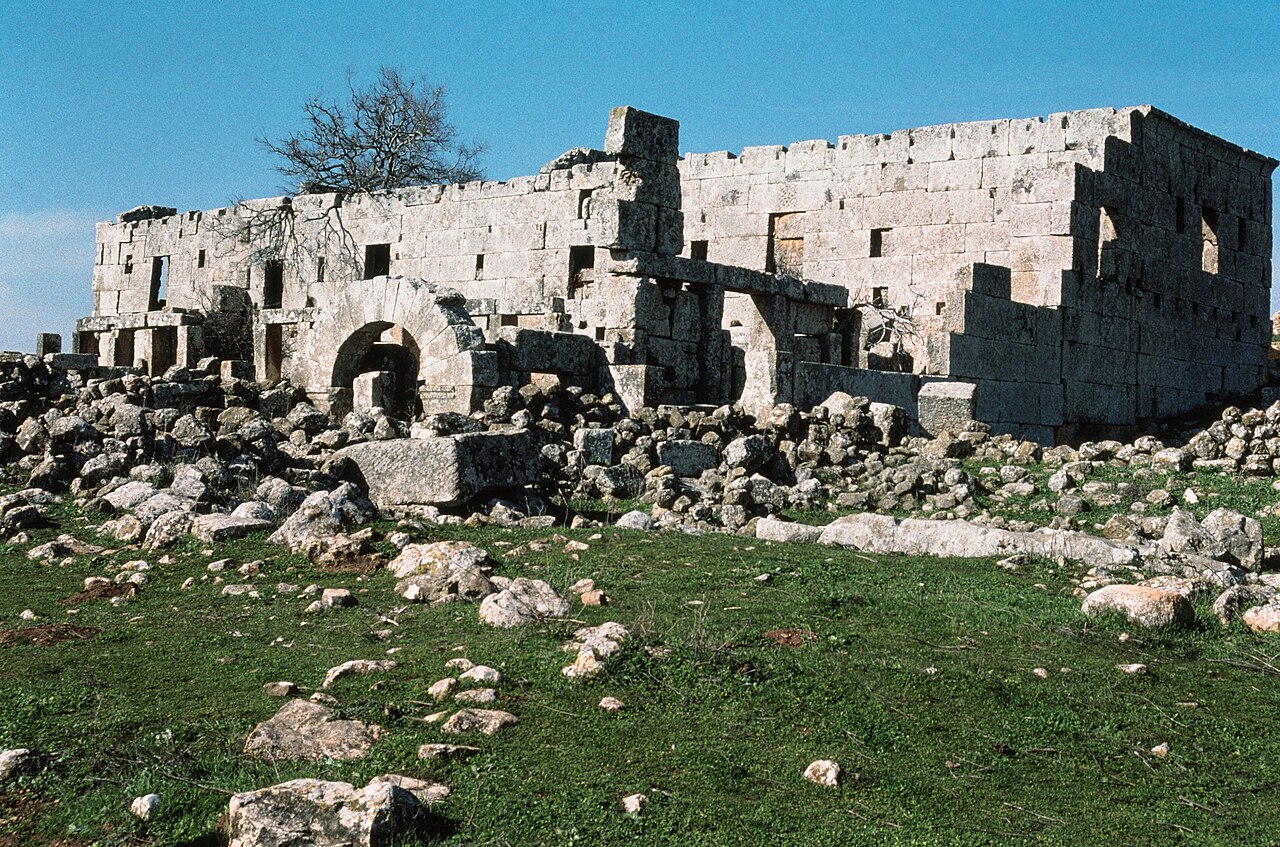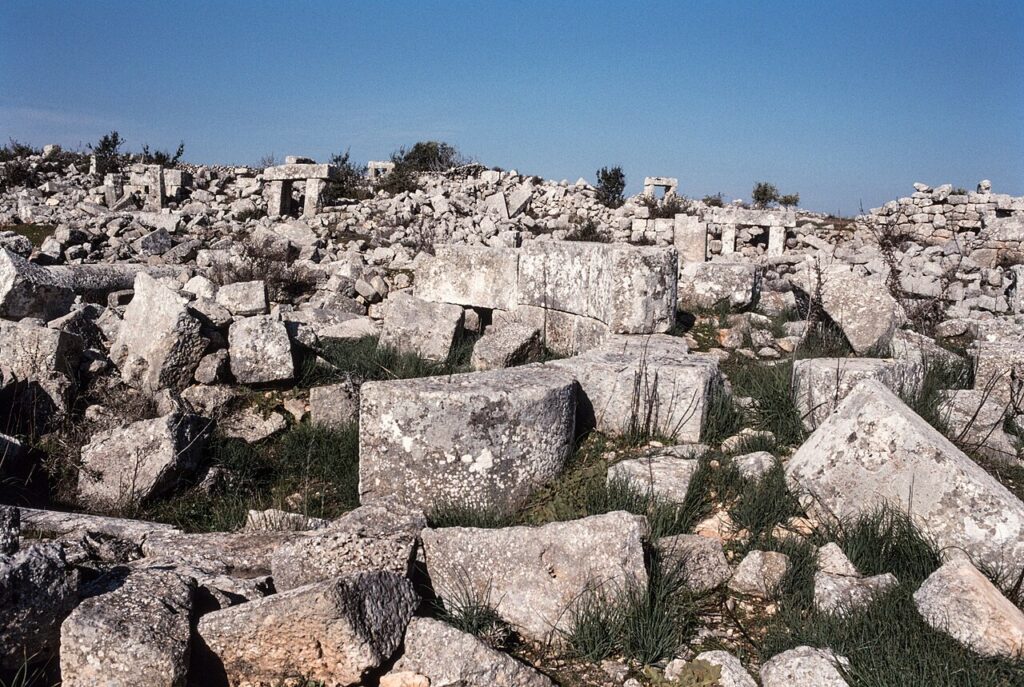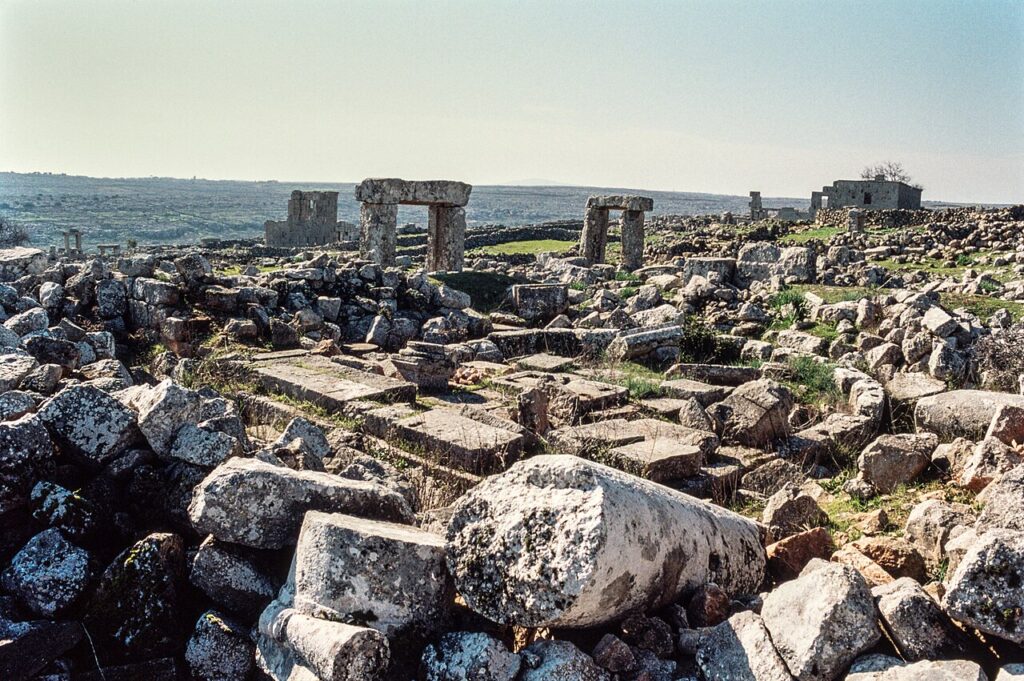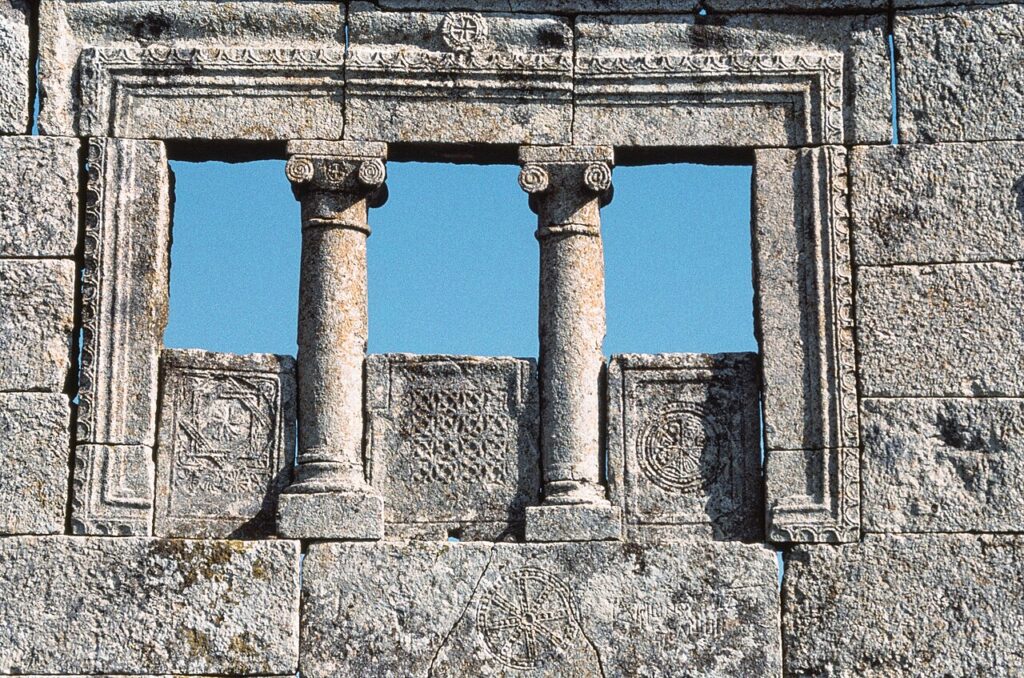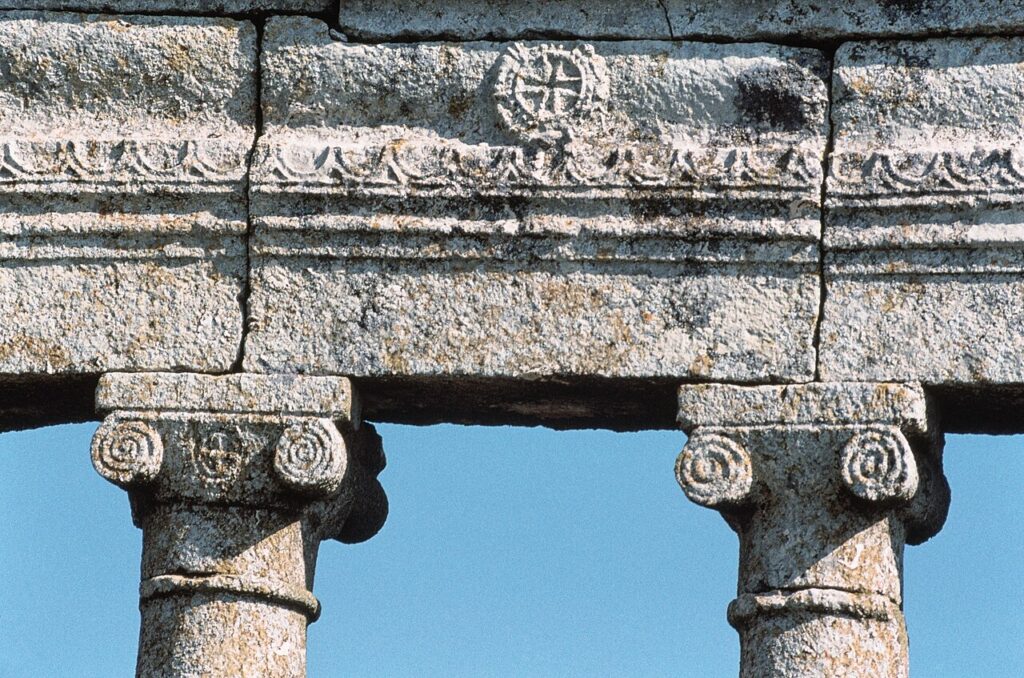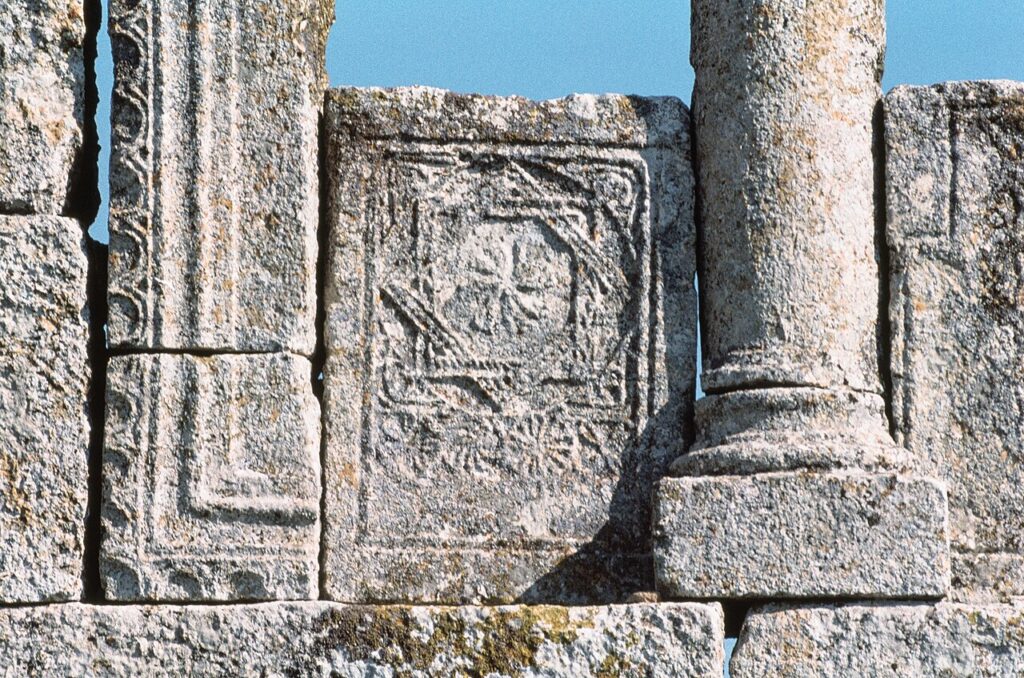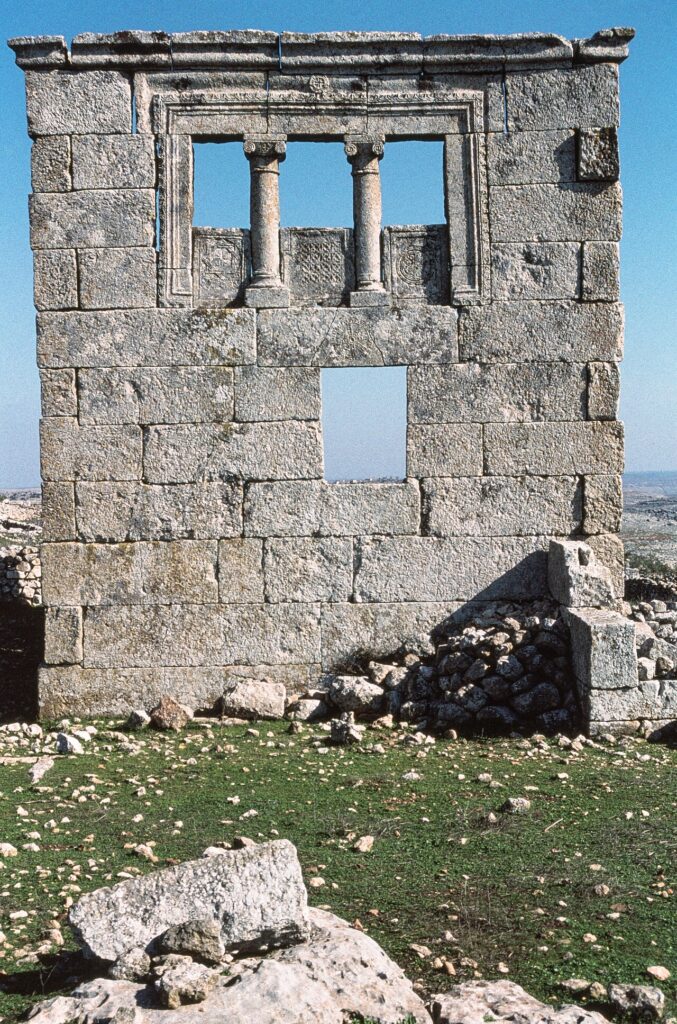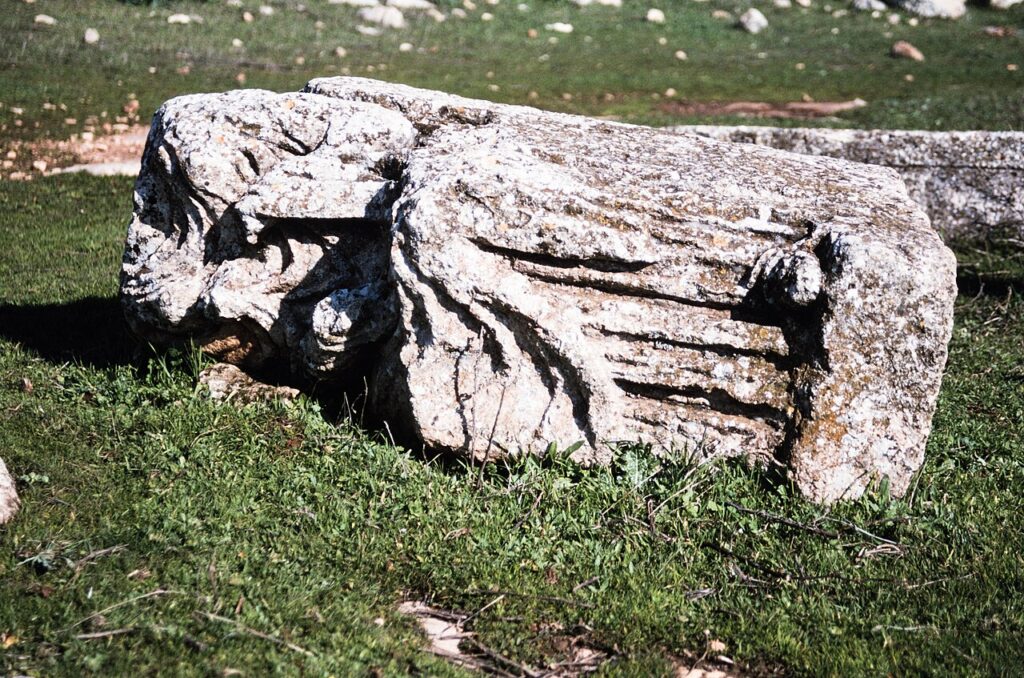Kafr Nabo Roman Temple
Place of Worship — 2nd Century AD
Perched on a rocky slope of Mount Brisha, the Roman temple at Kafr Nabo stands proudly, built in the mid-2nd century AD to honor Nabu, the Mesopotamian god of writing. It is one of the few surviving examples of Roman religious architecture in the region.
The temple’s facade greets visitors with four tall Corinthian columns, crowned by ornately carved friezes featuring a double-headed eagle—a motif widely used in Roman iconography to symbolize imperial power and divine protection.
The stairway leading to the temple faces eastward, aligning with the traditional orientation for ritual ceremonies in Roman temples.
During the Byzantine period, the site was repurposed for Christian worship, with the addition of a baptismal chamber behind the altar—evidence of its continued spiritual significance and architectural adaptation over time.
Although partially ruined, the temple remains a striking testament to the cultural and religious transitions that shaped northern Syria across centuries.

